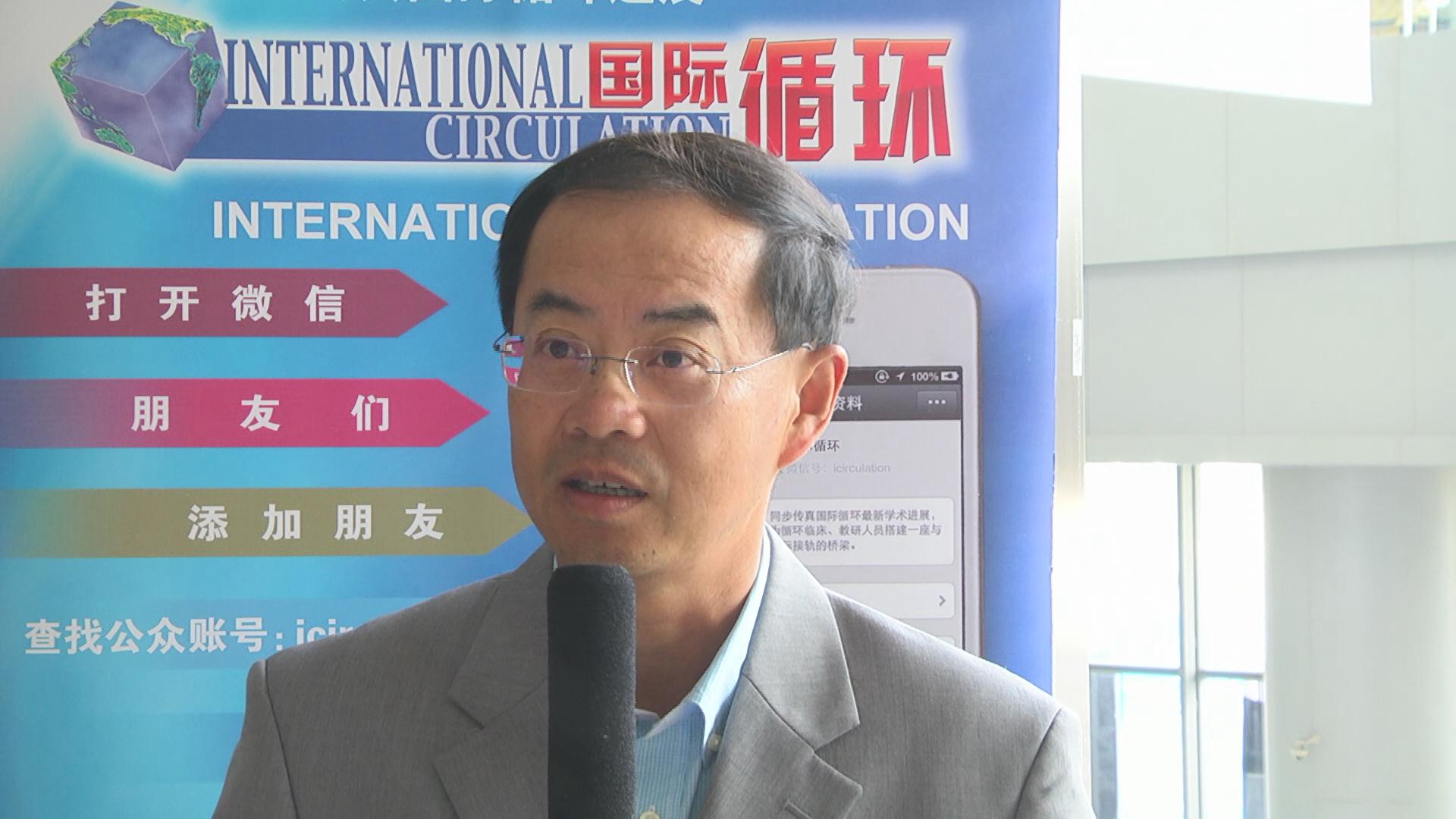编者按:在本届天坛国际脑血管病论坛(TISC)上,来自美国伊利诺斯大学医学院皮奥里亚分校伊利诺斯州OSF卒中中心及OSF卒中网主任David Wang教授介绍了中美欧卒中指南的差异及特点,以及颅内动脉狭窄的管理,针对这些讲题,我们对其进行了采访。

International Circulation: Can you tell us some of the characteristics and differences between Chinese and international stroke guidelines?
David Wang: Sure, there are quite a few differences. One of them is the way how the guidelines are developed, it is quite different. In China the process is a little bit different and they are somehow emphasizing on expert’s opinions. In the United States, the expert’s opinions will not come until the very last stage or until there is really no evidence to base it on anymore. Less emphasizing expert’s opinions and more emphasizing on the level of evidence that we have as part of our evidence based medicine. That is the development stage. The American guideline is much more detailed about all the sections. The new one in acute stroke guidelines have 6 new recommendations and includes everything from pre-hospitalization to triage to acute management and discharge. The Chinese guideline mostly emphasizes in care, during hospitalizations. In terms of treatment, the two guidelines are similar however there are some differences. For example in China they do recommend that you can use one of the thrombolytics called urokinase, that is the only drug in the world that is used in China. They also make some recommendations on the usefulness of neuroprotective agents called the neuroprotectin medicines; in the western countries like the United States we do not have any evidence so it is not recommended. To some degree the Chinese guidelines did make some recommendations on the Chinese traditional medicine. In a sense we could, if there is agreement, we can select those treatment options even though it has not been established. Basically those are some of the differences in terms of the guidelines. The American guidelines are being revised frequently; they have an update every 2 years and new guidelines will be written every 4 years. In terms of secondary stroke guidelines, I think the newest addition for the United States came out in May of this year. I am not sure the new Chinese guidelines will come out soon but I know they are reviewing it and hoping to update it very quickly. That is pretty much it in terms of the 2 major guidelines.
《国际循环》:您能否谈谈中国卒中指南与国际卒中指南分别有何特点?两者间有何区别?
David Wang教授:当然,两者之间有不少差异。首先,指南的制定方式不同。中国指南制定时在某种程度上更注重和强调专家意见,而在美国制定指南时则更加重视循证依据,只有在真正没有相关循证依据时才会推荐采用专家意见。也就是说,美国的指南更多强调循证医学的证据水平而非专家意见。此外,美国的指南中所有章节的内容更详细。其最新急性卒中指南作出6个推荐,其中涉及从入院前分流到急性期管理再到出院的所有相关环节。与之不同,中国指南主要强调住院期间的治疗。就治疗而言,中美指南大致相似,但也存在一些差异。例如,中国指南推荐可应用尿激酶进行溶栓治疗,目前世界上仅中国在使用这一药物。此外,中国指南还推荐应用神经保护制剂,而美国等西方国家则没有这方面证据,故并未推荐应用。中国指南在中国传统中药方面做了一些特别推荐。从某种意义上来说,如果患者同意,即使指南没有对其作出推荐,我们也可将其作为治疗选择。基本上,上述这些都是中美指南的差异。此外,美国指南的修订频率更频繁,一般每两年会更新1次,每4年编写一部新指南。今年5月份美国已经更新卒中二级预防指南。我不知道中国的新指南是不是很快会出来,但我知道中国目前正在对新指南进行审查并希望能尽快更新。



 京公网安备 11010502033353号
京公网安备 11010502033353号